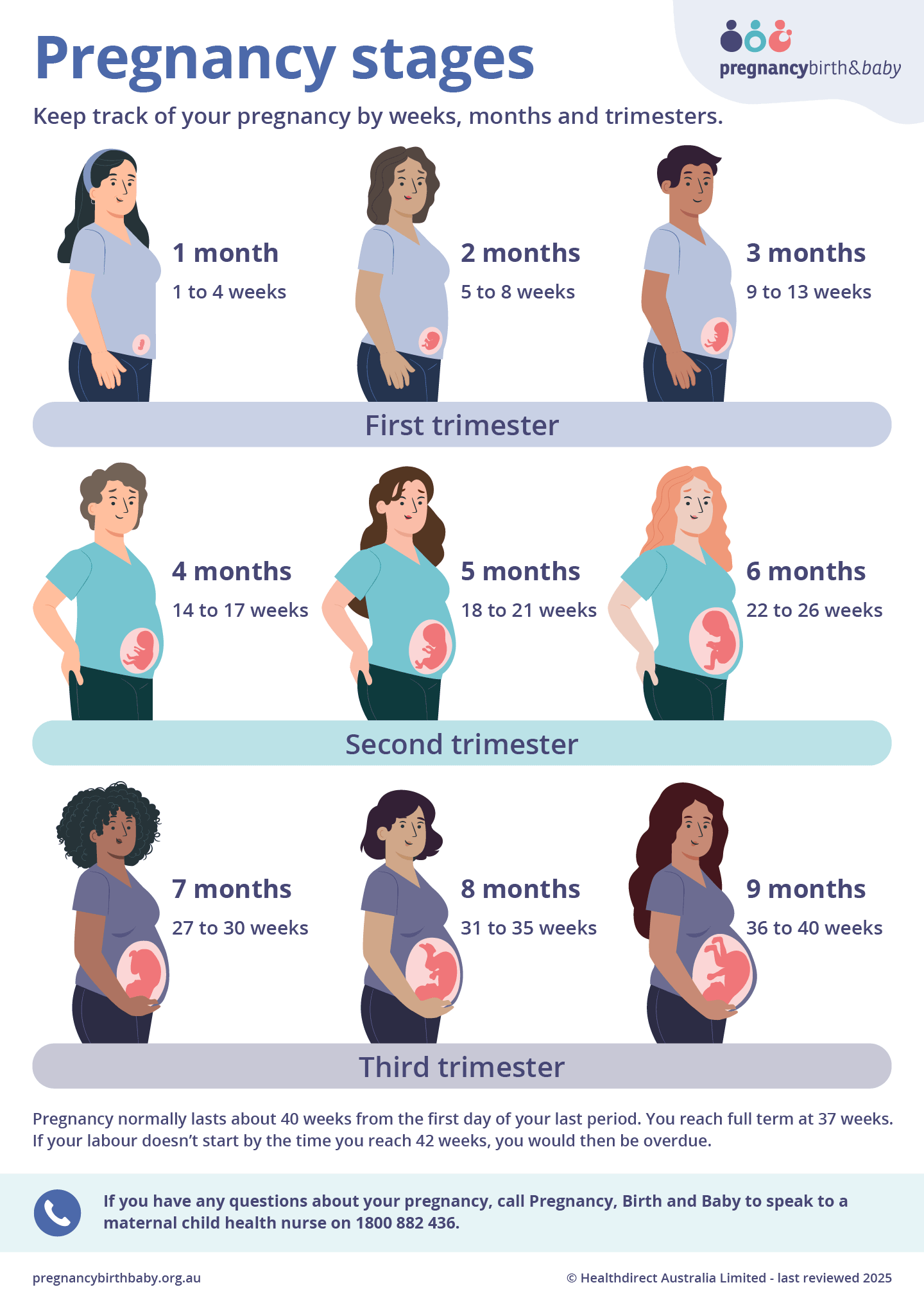Stages of pregnancy
3-minute read

View text version of infographic
Pregnancy stages
Keep track of your pregnancy by weeks, months and trimesters.
First trimester
- 1 month - 1 to 4 weeks
- 2 months - 5 to 8 weeks
- 3 months - 9 to 13 weeks
Second trimester
- 4 months- 14 to 17 weeks
- 5 months - 18 to 21 weeks
- 6 months - 22 to 36 weeks
Third trimester
- 7 months - 27 to 30 weeks
- 8 months - 31 to 35 weeks
- 9 months - 36 to 40 weeks
Pregnancy normally lasts about 40 weeks from the first day of your last period. You reach full term at 37 weeks. If your labour doesn’t start by the time you reach 42 weeks, you would then be overdue.
If you have any questions about your pregnancy, call Pregnancy, Birth and Baby to speak to a maternal child health nurse on 1800 882 436.
Want more like this?
See more guides and infographics from Pregnancy, Birth and Baby.
PDF formatLearn more here about the development and quality assurance of healthdirect content.
Last reviewed: April 2025


